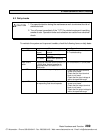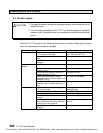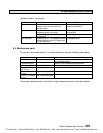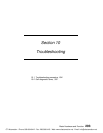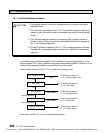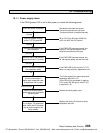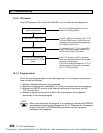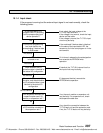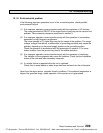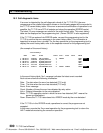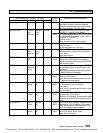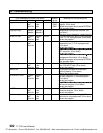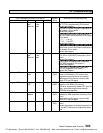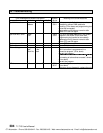
Basic Hardware and Function
297
10. Troubleshooting
10.1.4 Input check
If the program is running but the external input signal is not read normally, check the
following points:
Is the input status LED If not, check the input voltage at the
changed ON/OFF according T1/T1S’s input terminals.
to the corresponding input If the voltage is not normal, check the input
device operation ? device and the cable.
If the voltage is normal, the T1/T1S’s input
Yes circuit may be faulty.
Connect the programming If the monitored X device state is identical
tool, and monitor the to the state of the input status LED, the
corresponding X device state cause may lie in the user program or in the
in RUN mode environment.
Not normal
Check whether the X device If it is forced, release the force designation
is forced or not then execute the EEPROM write
operation.
Not forced
Check whether the I/O If identical, the T1/T1S’s internal circuit or
allocation table is identical to the input circuit may be faulty.
the actual I/O configuration
Not identical
Execute the automatic I/O If it becomes identical, execute the
allocation, and check whether EEPROM write operation.
the I/O allocation table is now
identical to the actual I/O
configuration
Still not identical
Is the allocation mismatch for If so, the card, module or expansion unit
a specific option card, I/O may be faulty. For expansion unit, check
module, or expansion unit ? the expansion cable also.
No
Is the allocation mismatch for If so, check the connection between the
all I/O modules mounted on T1/T1S basic unit and the expansion rack.
the expansion rack ? If not, the T1/T1S basic unit may be faulty.
CTi Automation - Phone: 800.894.0412 - Fax: 208.368.0415 - Web: www.ctiautomation.net - Email: info@ctiautomation.net



